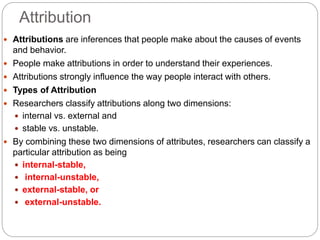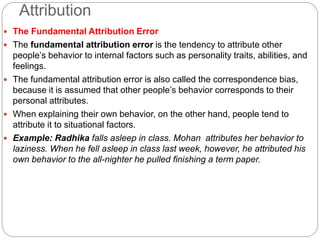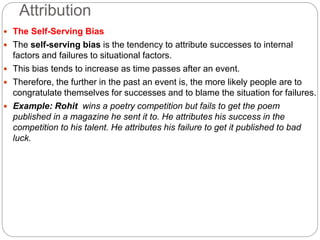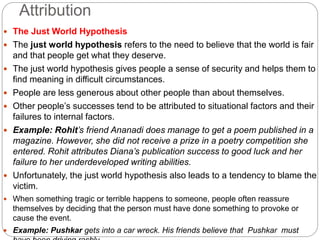This document discusses attribution theory, which explains how individuals infer the causes of events and behaviors and how these attributions affect interpersonal interactions. It categorizes attributions as internal vs. external and stable vs. unstable, explores various biases such as the fundamental attribution error, self-serving bias, and just world hypothesis, and examines how cultural influences impact attribution styles. Individuals from individualistic cultures are more likely to display biases, while those from collectivist cultures tend to attribute successes to situational factors and failures to personal effort.








